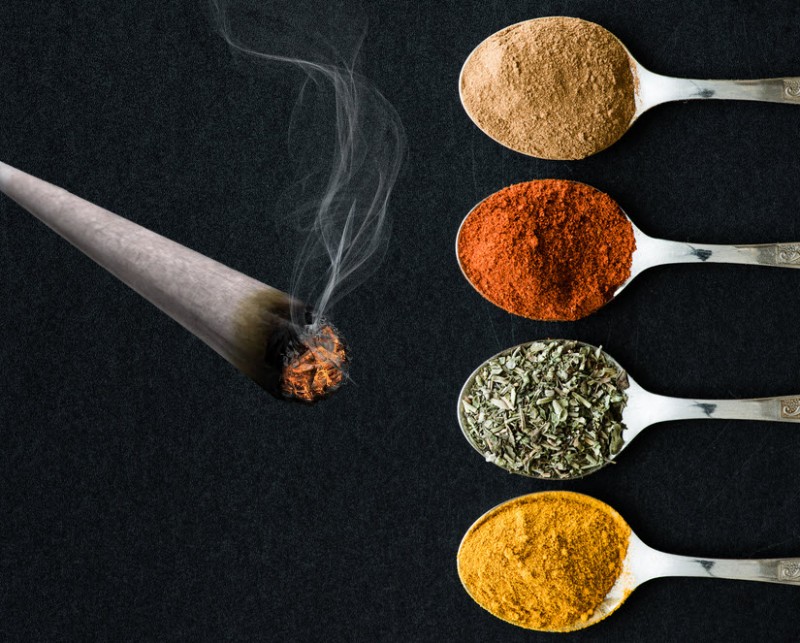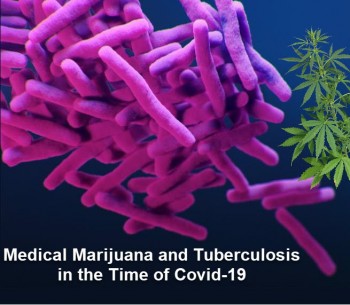Cannablends – Is there a way to safely change your toke with other herbs & flowers?

When it comes to mixing stuff with cannabis, most people tend to choose other cannabis related products; hash, wax, kief, etc.
In Europe, it’s custom to use tobacco to cut your weed due to the ridiculously high prices and some people have grown accustomed to it.
However, most people don’t tend to think beyond these blends when considering to spice up their joints.
That changes today!
Today, we’re going to be taking a closer look at non-traditional herbal mixtures you can add to your weed to create a completely different physiological effect. We’ll be talking about a few different types of herbs and their traditional or medicinal uses.
Some of these techniques have been used for thousands of years to treat a wide array of physical ailments and the best of all – most of them you can grow yourself!
If you grow your own weed, you could consider to add these to your garden. That way you can become far more versatile with your cannabis consumption.
The Foundation of Making your Own Herbal Mixes
When it comes to making your own herbal concoctions, there are a few proportions you need to keep in mind.
-
The Foundational Herb (40%) – Also known as “base herbs” the foundational aspect of any herbal blend typically consists of a fluffy or stringy herb that holds the rest of the herbs together.
-
Action/Flavor Notes (40%) – Next, we’re going to be taking a look at the “body” of the blend. Between the base blend and the action blend, you’ll have about an equal proportion. For example, the Base could be regular old weed, while the action/flavor note could be kief or something of the sort.
-
Astringent Herbs (15%) – You’ll want an astringent herb, meaning herbs that “dry up”. This is typically tobacco, but we’ll be taking a look at other herbs too.
-
High Notes – The last 5%% of the bowl is divided into your “high notes” or “herbal accents”. These are your stronger herbs that will impact the overall taste profile as well as have a modifying effect to the base herbs. (For example, putting a dab on the top of a bowl)
Understanding this dynamics, we can move onto constructing our own herbal blends. Here’s a quick snapshot of the ratios:
-
Base Herb = 40%
-
Action Herb = 40%
-
Astringent = 15%
-
High Notes 5%
Blending your Herbs
When it comes to blending, you’ll want to carefully measure out each herb. Some people do it by weight, others simply eye-ball the quantities.
Once measured, follow up by cleaning up the herbs from any seeds and stems and undesirables in the mix. It’s best to do this by hand, but if the herbs are not too dirty you can use a grinder.
If you’re making a blend for your pipe, you don’t need to worry too much about stems, however if you’re thinking of rolling it – you’ll definitely want to get it as fine as possible without turning it into powder.
It still needs to be stringy herbs.
Moisture
You don’t want to smoke herbs that are too dry. These burn up too fast, is harsh on the throat and will make you fly into a coughing fit.
However, you don’t want to be storing your blends with too much moisture either. So how do we solve this?
We store dry, and then cure small batches to smoke as we need. As with weed, you’ll want to store in an air tight glass jar that is stored in a cool dark place.
Another small jar will be used to add moisture to your blends. You can use anything like a small piece of apple, banana peel, lime/lemon peel, etc to add to your mix. You’ll wait roughly 30-mins to check the moisture of your blend. If it needs to sit for a bit longer, check every 30-mins.
If you don’t want to impact the taste profile of your herbs by adding peels or apples – you can take a bit of cotton, soak it in water, then squeeze out the excess water so it’s moist but not wet.
Once again, follow the 30-minute rule to get it to the right moisture for smoking. You want them to be moist but still able to burn. This will also slow down the burning process.
A Bunch of Herbs to Choose from:
BASE HERBS:
For Base herbs you can use; Mullein, Raspberry Leaf, Pearly Everlasting, Damiana, Mugwort, Marshmallow Root, Willow Bark
ACTION HERBS:
Yarrow, Pedicularis spp., mints, Lemonbalm, Red Osier dogwood, green sage, goldenrod, chamomile, St. John’s wort, catnip, Damiana, skullcap, Lobelia, passionflower, red root leaf, tulsi, hops.
ACCENT HERBS (FOR THE KICK):
white sage, hummingbird sage, osha root or leaf, valerian, blue lotus, linden flowers and bract, rose petals, Eucalyptus, hyssop, lavender.
ATRINGENT HERBS (To dry things up a bit)
uva-ursi/kinnikinnick, red root leaf, willow bark, raspberry leaf, green sage leaf, pipsissewa leaf, mugwort leaf, palo santo.
While this list does provide you with herbs to make “non-cannabis” blends, in your special blend cannabis will be your “BASE HERB” and could even include parts of the ACTION HERBS.
But when you mix cannabis with other herbs, you begin to experiment with the overall effect.
Let’s look at some common mixes;
Common Cannablends
Here’s a couple of herbs that people have mixed together with cannabis.
1 – Lavendar – Adding some more chill and flavor to your smoke
2 – Cannabis Skullcap – Skullcap has a mild calming effect when smoked, couple this with cannabis – you got a potential insomnia stopper supreme!
3 – Cannabis Indica Mugwort – Many cultures used to smoke mugwort to induce vivid dreams. It also has a bit of psychotropic effect when you’re awake. If you want to have crazy dreams – dry a CannaWort Joint.
4 - St. John’s Joint – St John’s Wort is a very common medicinal herb and is a mood stabilizer and can help with depression and melancholy. It can help reduce anxiety and in greater quantities can be used as a sedative. In combination with weed, it’s a powerful blend!
STICKY BOTTOM LINE:
If you’re looking for a way to spice up your tokes or wanting to start growing some complementary smoke-able herbs – this article should have given you enough to start you on your journey of Cannablends!
HERBAL BLENDS GO MAINSTREAM, READ MORE..
YOU CAN NOW BUY HERBAL SMOKE BLENDS ONLINE, CHECK OUT MEO!







